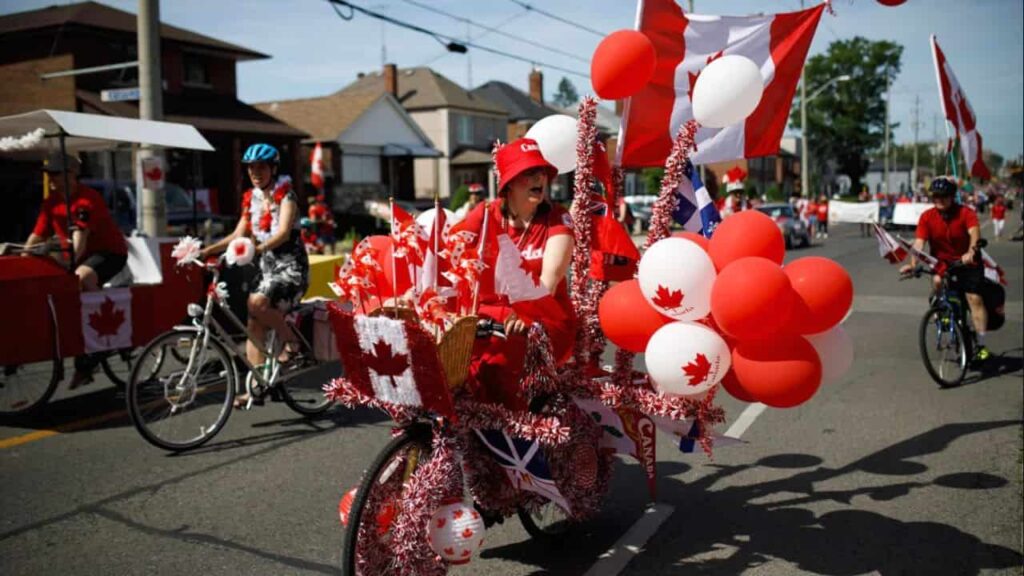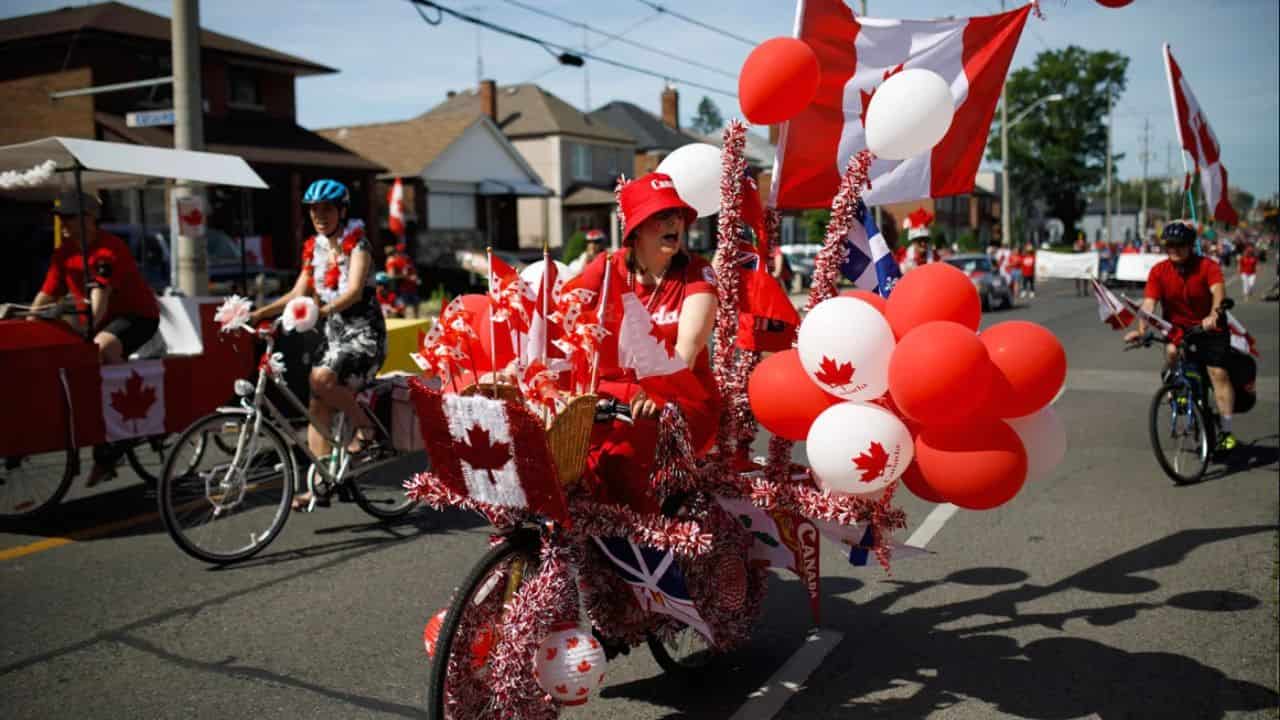What is Canada Day and How is it Celebrated? A Comprehensive Guide
Discover the rich history and diverse celebrations of Canada Day. Learn about its origins, how it evolved, and the various traditions that make this national holiday unique.
Explore the significance of Canada Day, celebrated on July 1st each year. This comprehensive guide delves into the history of the holiday, from its origins as Dominion Day to its modern-day celebrations. Learn how Canadians across the country, from Vancouver to Ottawa, commemorate this day with festivals, fireworks, barbecues, and more. Understand the cultural and historical context of Canada Day and how it reflects the nation’s evolving identity.

What is Canada Day and How is it Celebrated?
Every year, on July 1st, Canada celebrates Canada Day, a national holiday that commemorates the country’s confederation. This date marks the unification of the British North American colonies into a single country called Canada in 1867. Much like the United States celebrates Independence Day on July 4th, Canadians across the country partake in festivities that reflect their national pride and heritage. However, the story and celebrations of Canada Day are more nuanced and complex than many might assume.
Origins of Canada Day
Canada Day’s origins trace back to the passage of the British North America Act (now called the Constitution Act) on July 1, 1867. This legislation united the provinces of Ontario, Quebec, New Brunswick, and Nova Scotia into the Dominion of Canada. Initially known as Dominion Day, the holiday marked an administrative change rather than a revolutionary act like the American Declaration of Independence.
The British North America Act was seen as a practical piece of legislation, rather than a dramatic or symbolic gesture. This administrative nature is reflected in historical accounts, such as the editorial from the Toronto Globe in 1875, which described the act as “a piece of very dry, practical legislation.”
Evolution of Celebrations
Early celebrations of Dominion Day were often spontaneous and localized, with little federal government involvement. These festivities were inspired by American Independence Day celebrations, especially in Canadian border towns where residents would join in on the American festivities. Similarly, Canadian celebrations began to adopt elements such as gun salutes, mirroring the American traditions.
Ottawa, the national capital, began to take a more active role in the 1950s, encouraging standardized celebrations across the country. This move was part of a broader effort to foster national unity and a shared sense of identity among Canadians.
Transition to Canada Day
The name change from Dominion Day to Canada Day in 1982 was part of a larger shift in Canadian identity. This change reflected a move away from the country’s colonial ties to Britain and towards a more inclusive and multicultural national identity. The change was part of broader efforts that included adopting a new national flag in 1965, formalizing “O Canada” as the national anthem in 1980, and establishing the Order of Canada.
Despite some resistance from those who valued the connection to Canada’s British heritage, the name change has largely been accepted by Canadians. Today, Canada Day celebrations emphasize the country’s diversity and bilingualism, reflecting evolving national values and government policies.
Celebratory Activities
Canada Day celebrations include a wide range of activities that take place across the country. Major cities like Vancouver, Toronto, and Charlottetown host large festivals and fireworks displays. In Ottawa, the national capital, the celebrations are particularly grand, attracting tens of thousands of people to Parliament Hill. This year, the official ceremonies will take place around LeBreton Flats Park and Parliament Hill, featuring a series of live musical performances and a spectacular fireworks display.
One of the highlights in Ottawa is the appearance of the Royal Canadian Air Force’s aerobatics flight demonstration team, the Snowbirds. This year, marking the RCAF’s 100th anniversary, a massive flypast will be conducted over the National Capital Region, adding to the day’s excitement.
Culinary Traditions
Food plays a significant role in Canada Day celebrations, with barbecues and pancake breakfasts being popular across the country. These culinary traditions bring families and communities together, adding a delicious aspect to the festivities. From coast to coast, Canadians indulge in a variety of dishes that reflect the nation’s diverse culinary heritage.
Regional Differences
While the national capital sees the most significant celebrations, Canada Day is often a more subdued affair in many other parts of the country. Smaller communities may organize picnics, local barbecues, and smaller fireworks displays. Unlike the extensive parades and massive gatherings seen in American Independence Day celebrations, many Canadian communities opt for more low-key events.
Historical and Cultural Significance
Canada Day serves as a reminder of the country’s journey towards becoming a unified and independent nation. It’s a day to celebrate the country’s achievements and reflect on its history. The holiday also provides an opportunity to recognize the contributions of Indigenous peoples and their role in shaping Canada’s history and culture.
The Role of Media and Government
The media and government play a significant role in shaping and promoting Canada Day celebrations. Since the 1950s, Ottawa has taken a more active role in encouraging standardized celebrations across the country. This involvement has helped foster a sense of national unity and shared identity.
Challenges and Controversies
Despite the widespread acceptance of Canada Day, the holiday is not without its controversies. Some Canadians feel that the name change from Dominion Day to Canada Day represented a shift away from the country’s British heritage. Additionally, there is ongoing debate about how the holiday should address and include the histories and contributions of Indigenous peoples.
Conclusion
Canada Day is a multifaceted celebration that reflects the country’s rich history and diverse cultural heritage. While it shares similarities with American Independence Day, it also has its unique traditions and significance. From grand fireworks displays in the national capital to local picnics and barbecues, Canada Day brings Canadians together to celebrate their shared identity and history. As the nation continues to evolve, so too will the ways in which Canadians commemorate this important day.
Read More
- solar eclipse 2024: See the moon shadow race across North America
- Boeing and NASA decide to proceed with the historic crewed launch of a new spacecraft.
- Dick Vitale Announces Cancer Recurrence: A Battle with Resilience and Positivity
- Understanding POTS: Christina Applegate Daughter Sadie Opens Up About Her Diagnosis
